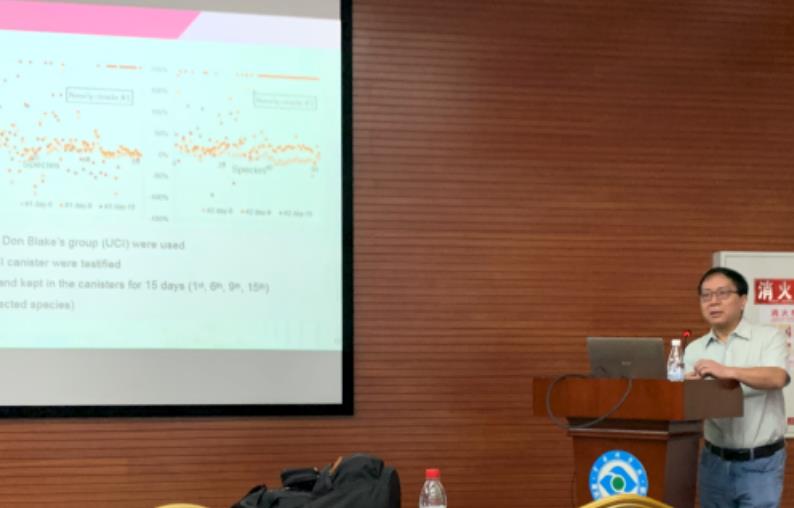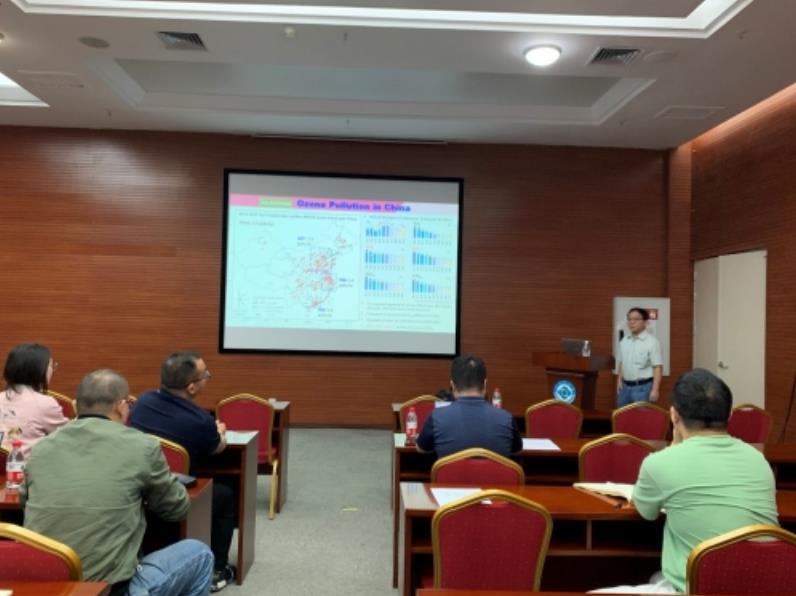

On May 26th, Professor Guo Hai, an editorial board member of the journal "Science of the Total Environment" and editor of "Aerosol and Air Quality Research," as well as the Director of the Laboratory for Air Quality Research at The Hong Kong Polytechnic University, Fellow of The Hong Kong Institution of Engineers, and a Changjiang Distinguished Professor appointed by the Ministry of Education, visited Chongqing Academy upon the invitation of Director Chen Yang of the Atmospheric Environment Research Center. Professor Guo Hai delivered an academic lecture on "Characteristics, Sources, and Interrelationships of Volatile Organic Compounds (VOCs) and Ozone (O3) in China." Experts, leaders from Chongqing Academy, and teachers and students from the Three Gorges Institute of Chongqing Academy listened attentively to Professor Guo Hai's presentation and engaged in in-depth discussions.
Professor Guo Hai's presentation highlighted that ozone (O3) concentrations are on the rise in major urban clusters in China, including the North China Plain, Pearl River Delta, Yangtze River Delta, and the Chengdu-Chongqing region. Observations of O3 precursors, Volatile Organic Compounds (VOCs), indicated that C4 components have the highest concentration in the northern region, while C5 components dominate in the southwestern region. Among these, alkanes and carbonyl compounds account for up to 69% of the total VOC concentration. Professor Guo Hai's research group, based on observed data of VOCs, NOx, and O3, and using their developed models combined with source apportionment techniques, analyzed the sensitivity of O3 formation. The study revealed that the impact of reducing different sources on O3 formation varies across different regions. Additionally, Professor Guo Hai's research group discovered that high O3 levels in northern winters may result from the reaction between O3 and olefinic substances, leading to the generation of hydroxyl radicals. In the end, the attending teachers and students actively sought advice from Professor Guo Hai. Professor Guo patiently and meticulously answered their questions, creating a lively atmosphere with a strong academic presence.
Professor Guo Hai obtained his Bachelor's degree from Wuhan University in 1985, Master's degree in 1988, and a Ph.D. from Macquarie University, Australia, in 1999. During 1999-2001, he conducted postdoctoral research at New York University, USA. From 2004 to 2005, he joined the team of Nobel laureate Sherwood Rowland and Donald Blake at the University of California, Irvine, engaging in atmospheric photochemistry research.
Professor Guo Hai's research spans various fields, including atmospheric chemistry, photochemistry, source apportionment, new particle formation, acidic fine particulate matter, indoor and outdoor air pollution, and secondary aerosols. He has published over 170 papers in high-impact international journals, with total citations exceeding 8,400 and an H-index of 51. He is recognized as a top 2% highly cited scientist in the field of meteorology and atmospheric science from 2020 to 2022 globally.


